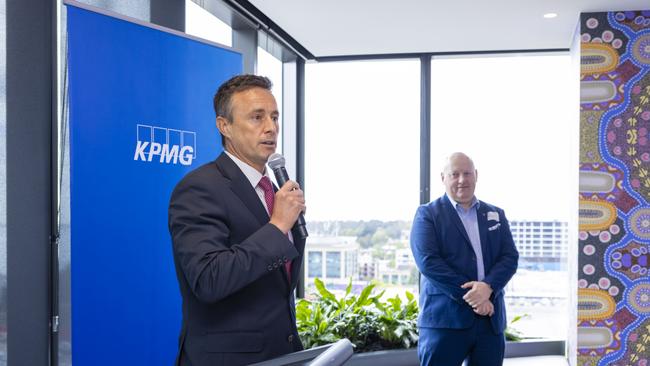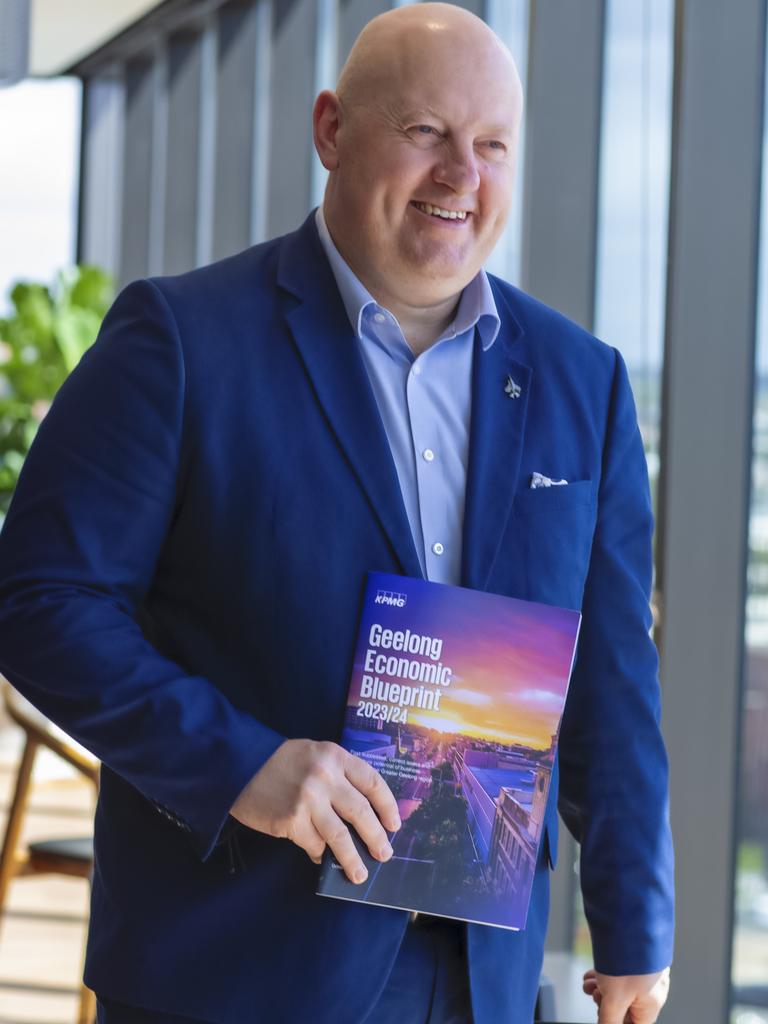KPMG launches first-ever Geelong Economic Blueprint after survey of business leaders identifies key issues impacting the region
Geelong’s business community has had its say: let’s not leave our struggling suburbs behind as industry prepares for significant growth.

Geelong
Don't miss out on the headlines from Geelong. Followed categories will be added to My News.
Improving economic and educational outcomes for residents of Geelong’s most disadvantaged suburbs must be a key measure of success for the region, a survey of 56 local business leaders has found.
The need for “shared prosperity” was one of five key success indicators highlighted in the inaugural Geelong Economic Blueprint, released Tuesday by big four consultancy firm KPMG.
Survey respondents represented a wide range of industries and included small business operators all the way up to Barwon Health boss Frances Diver and Deakin University vice chancellor Iain Martin.
As the region continued to evolve into a business hub, a majority identified the need for the resultant prosperity to be enjoyed by all, particularly in the historically disadvantaged areas of Corio, Norlane and Newcomb.
Regular analysis of median and disposable incomes at a postcode level would be required.
“We can stand here and look at Norlane and know we’ve got the most disadvantaged suburb in Victoria,” KPMG’s Matthew Fletcher told attendees at the launch.
“It’s an area which we all, in a sense, have responsibility for.”
In her survey response, Ms Diver said forecast population growth required careful planning to “ensure that the economic benefits of that growth are broadly shared across the community to improve equity and reduce disadvantage”.

The most recent Census found households in Norlane, on average, earned $926 per week, compared to Greater Geelong’s average of $1592.
Mr Fletcher, who spearheaded the report, pointed to international examples of successful business growth programs that Geelong should learn from.
These included Germany’s Invest in Bavaria and America’s Opportunity Austin.
“These could serve as valuable inspiration and discussion among leaders and organisations within the Geelong business community,” Mr Fletcher said.
KPMG opened its Geelong office in late August.
Located on level eight of the GMHBA building and headed by Paul Robson, approximately 50 staff are based there presently, with expectations that number will grow over time.
Mr Robson described the blueprint as a “thought leadership” document.
“The overall picture suggests the city and region have an exciting and productive future,” he said.
“Geelong is an emerging leader with a significant business footprint. It has all the elements for sustained business growth.”
Aside from shared prosperity, other measures of success were: gross regional product growth; business growth and diversity; employment and education data; and inbound investment.
The 3.7 per cent annual growth of Geelong’s gross regional product in recent years exceeded both the state and national figure.
Key insights included lifestyle acting as a “huge magnet”, Geelong having all the elements needed for sustained business growth, the need for leadership and collaboration, and shared outcomes achieved through common goals.
Geelong Manufacturing Council chief executive Jennifer Conley said the region had all the attributes to be an “industrial centre of excellence”.
“We have an amazing natural advantage: the port, the airport, the legacy of skills and capabilities, our education and research facilities, even the ability to deal with difficult things like major hazard facilities,” she said.
More Coverage
Originally published as KPMG launches first-ever Geelong Economic Blueprint after survey of business leaders identifies key issues impacting the region







